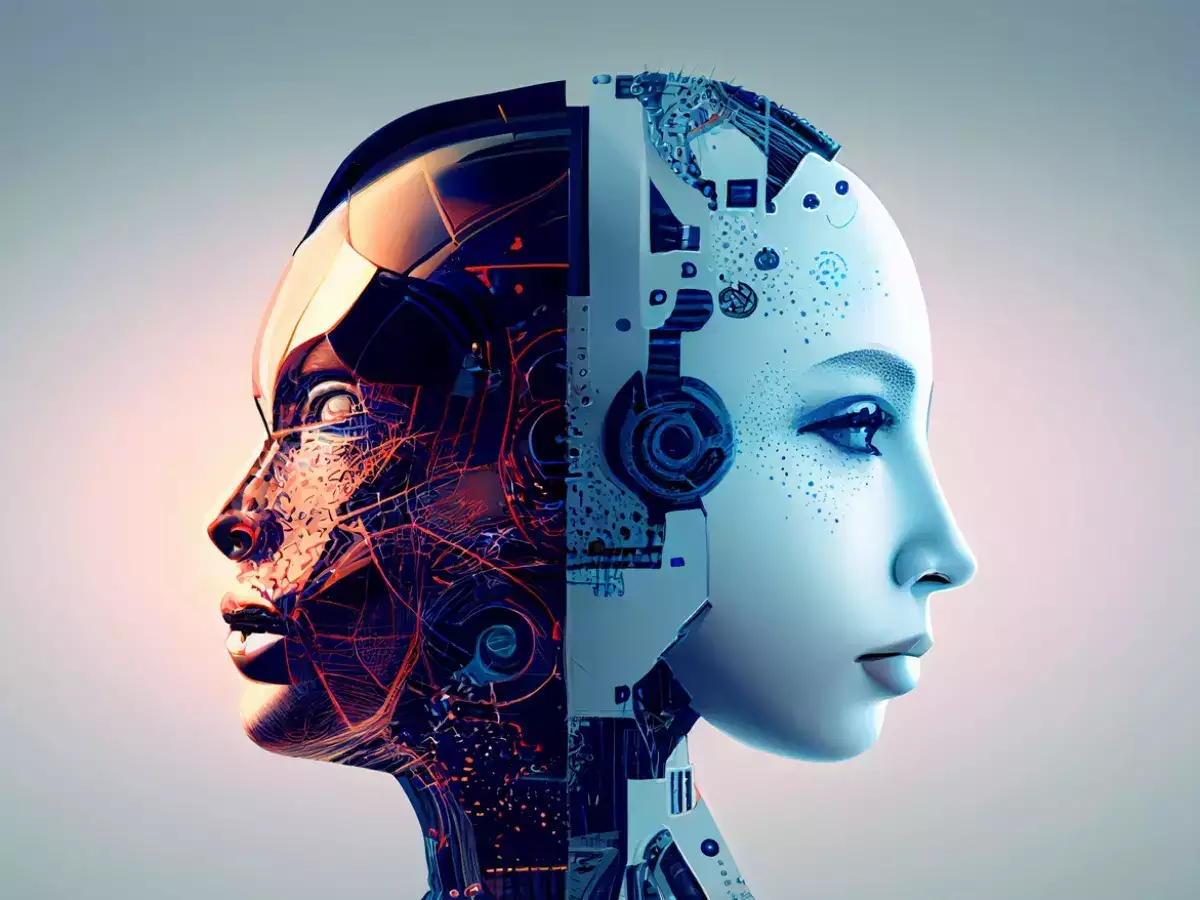“Understanding Artificial Intelligence (AI): A Comprehensive Guide to the Basics
The development of computer systems that are able to carry out tasks that traditionally require human intelligence is referred to as machine learning. Understanding natural language, identifying images, making decisions, and picking up knowledge from experience are some of these activities.

The History of AI
The concept of artificial intelligence dates back to ancient times, but significant advancements have been made in recent decades. In the 1950s, the field of AI emerged, and researchers began exploring the possibilities of creating intelligent machines. Over the years, AI has experienced breakthroughs, including the development of expert systems, robotics, and machine learning algorithms.
Types of AI
artificial intelligence can be categorized into different types based on its capabilities and limitations.
Narrow AI
These systems excel at performing well-defined tasks, such as voice recognition or image classification. They operate within a limited domain and do not possess general intelligence.
General AI
General artificial intelligence, also called strong machine learning or human-level AI, aims to replicate human intelligence across a wide range of tasks. This level of AI possesses the ability to understand, learn, and apply knowledge in various contexts. However, achieving general AI remains a significant challenge and is an active area of research.
Superintelligent AI
Superintelligent AI surpasses human intelligence and is purely hypothetical at this stage. It refers to AI systems that possess cognitive abilities far superior to those of humans. The development of super intelligent AI raises questions about its impact on society and requires careful consideration of ethical implications.
How AI Works
Artificial intelligence systems rely on various techniques and algorithms to perform tasks. Here are a few fundamental concepts in Maschine learning:
Machine Learning
Machine Learning (ML) is a subset of Artificial intelligence that enables computers to learn from data and improve their performance without being explicitly programmed. ML algorithms detect patterns and make predictions or decisions based on the available information. Common ML techniques include supervised learning, unsupervised learning, and reinforcement learning.
Neural Networks
Neural networks are a crucial component of Artificial intelligence, inspired by the structure of the human brain. They consist of interconnected layers of artificial neurons that process and analyze data. Neural networks are used in image recognition, natural language processing, and many other AI applications.
Deep Learning
Deep Learning is a subfield of ML that utilizes neural networks with multiple hidden layers. These deep neural networks can automatically learn intricate representations of data, enabling them to perform complex tasks like speech recognition and natural language understanding. Deep Learning has revolutionized artificial intelligence applications in recent years.
Applications of AI
AI has found applications in various industries and sectors, transforming the way we live and work.
Healthcare
AI is revolutionizing healthcare by enabling early disease detection, personalized treatment plans, and improving diagnostic accuracy. AI algorithms can analyze medical images, assist in drug discovery, and provide virtual nursing support.
Finance
In the financial sector, AI is used for fraud detection, algorithmic trading, and risk assessment. AI-powered chatbots and virtual assistants are also enhancing customer service experiences in banking and finance.
Education
AI technology is being leveraged to personalize education by creating adaptive learning platforms. These platforms analyze individual student performance and provide tailored recommendations for effective learning.
Transportation
Self-driving cars are a prominent example of AI in transportation. AI algorithms enable vehicles to perceive their surroundings, make driving decisions, and navigate safely. Additionally, AI optimizes traffic management systems, reducing congestion and improving transportation efficiency.
AI and Ethics
As AI continues to advance, ethical considerations become increasingly important. Here are some key ethical concerns associated with AI:
Privacy Concerns
AI systems often rely on collecting and analyzing vast amounts of user data. Striking a balance between the benefits of AI and individual privacy rights is crucial.
Bias and Fairness
AI algorithms can be influenced by biases present in training data, leading to unfair outcomes and discrimination. Ensuring fairness and addressing bias in AI systems is essential to maintain ethical standards.
Job Displacement
The automation potential of AI raises concerns about job displacement and unemployment. It is crucial to manage the impact of AI on the workforce and implement measures to reskill and upskill individuals.
The Future of AI
The future of AI holds immense possibilities. Advancements in AI research and technology will likely lead to further breakthroughs and new applications. However, ethical considerations, regulation, and responsible development will play a vital role in shaping the future of AI.
Conclusion
In conclusion, AI is a transformative technology that holds great potential for enhancing various aspects of our lives. Understanding the basics of AI, its applications, and the ethical considerations surrounding its development is essential. As AI continues to evolve, it is crucial to harness its power responsibly and ensure its benefits are accessible to all while mitigating potential risks.

Technoob This is really interesting, You’re a very skilled blogger. I’ve joined your feed and look forward to seeking more of your magnificent post. Also, I’ve shared your site in my social networks!